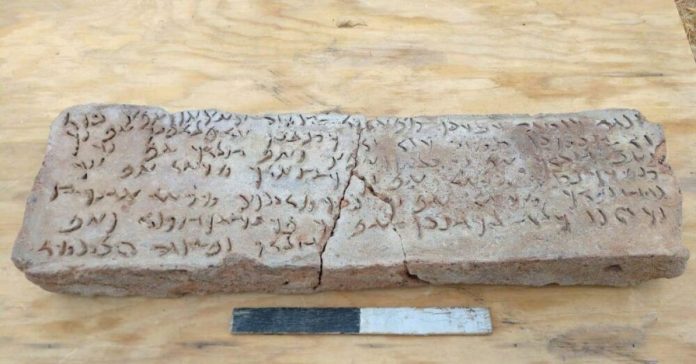“Kazakh archaeologists uncovered a unique inscribed clay tablet at the Kultobe settlement in the Arys district—marking the first such find in the country. Dating back nearly 2,000 years, the artifact has been described as a discovery of global significance, according to Liter.kz.
The find consists of a clay brick composed of three fragments, bearing seven lines of 218 characters written in the ancient Aramaic alphabet. Professor Nicholas Sims-Williams, a linguistics expert from the University of Cambridge, has already partially deciphered the text, according to Dr. Alexander Podushkin, a Doctor of Historical Sciences.

Tablet Translation
Dr. Podushkin, leader of the expedition from Kazakhstan’s Central State Museum, shared details:
“From what has been translated so far: The text describes the founding of a city by an army leader named Sapadani from Chach (modern Tashkent region). He came to establish a city on the lands of the ‘people of gardens’ (from the word ‘bak,’ meaning garden) and the ‘people of tents’ (nomads). The inscription lists rulers of major centers of the time: Samarkand, Bukhara, Kersh, Nakhsheb, and Chach. It also mentions the killing of one leader and references treasures that later became the property of the supreme ruler. Initially, Nicholas translated the name as a title, but after studying the full text, it turned out to be Sapadani’s personal name. For the first time in nearly two millennia, we have the name of a figure involved in founding a city.”
Signifigance
Archaeologists assert this is a discovery of global importance. Reason being it’s the first complete text with a clear beginning and end found in 30 years. The writing is in an ancient Iranian dialect. Scholars refer to it as “proto-Sogdian” or the “Kangju language”. The Kangju state established the city in the early centuries CE.
Excavators found the tablet embedded in the wall masonry of a small structure. This placemnet suggests that later inhabitants reused inscribed tablets as ordinary bricks.
Andrei Donets, a senior researcher at the Regional History Museum’s archaeology department, explained:
“The Kultobe settlement was founded in the first centuries C.E.. These bricks were likely produced to be installed in gate walls or other parts of Kangju state cities. So visitors could read about the city’s origins, ownership, and historical events. Since 1991, we’ve found inscribed brick fragments here. But this year, we finally discovered a complete brick with over 200 characters—a monumental find for paleolinguists. A full translation will be available soon.”

Archaeologists are investigating the site that produced these clay tablets and believe local craftsmen made them. They have already uncovered similar un-fired bricks.
A Discovery of Global Significance
Dr. Podushkin emphasized the broader implications:
“This discovery transcends national importance—it is truly global. The origins of statehood and ethnogenesis of modern Kazakhstan are tied to the Kangju civilization. With its urban centers, material and spiritual culture, epitomized by this writing. Writing has always been an indicator of advanced civilization and a hallmark of statehood. This artifact gives us profound reasons to take pride in our ancestors’ traditions, which laid the foundation for the Kazakh people. It aligns with the ‘Rukhani Zhangyru’ program, which promotes the preservation and popularization of historical and cultural heritage.”
Additional Finds
Beyond the inscribed tablet, archaeologists this season uncovered two burials with remains of Kultobe’s ancient inhabitants. Along with well-preserved ceramics, jewelry, and bronze and Egyptian faience tableware.

